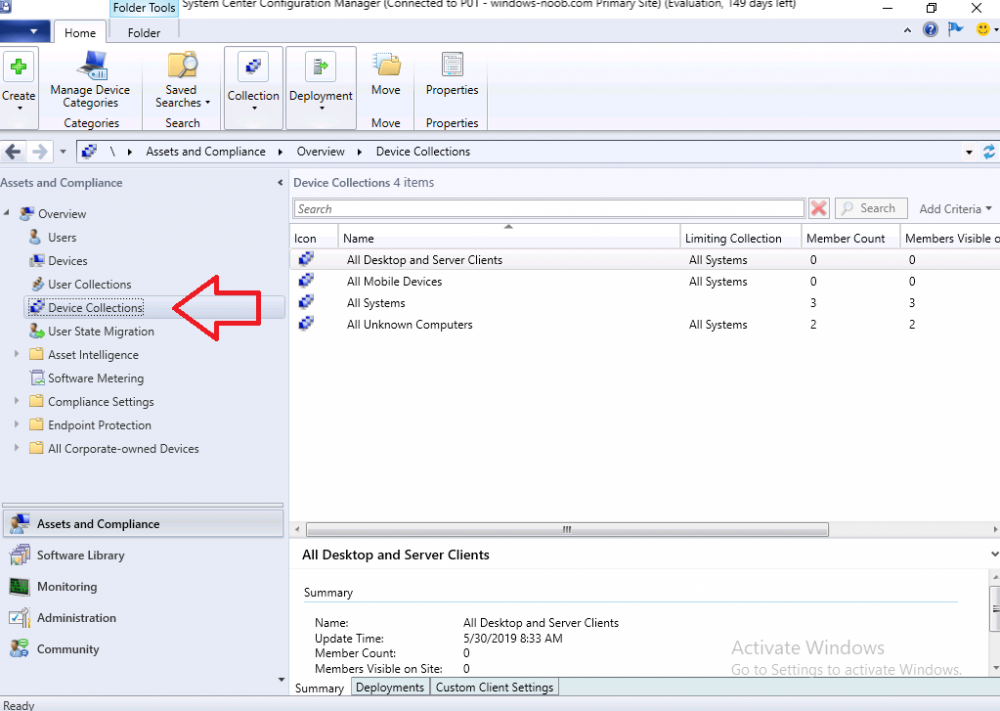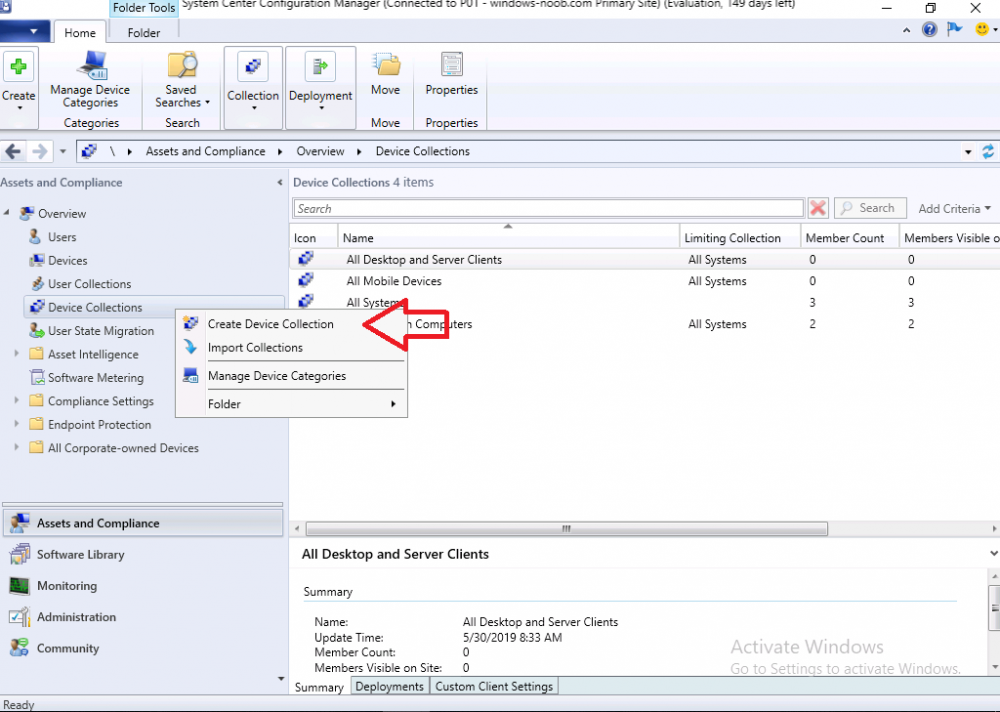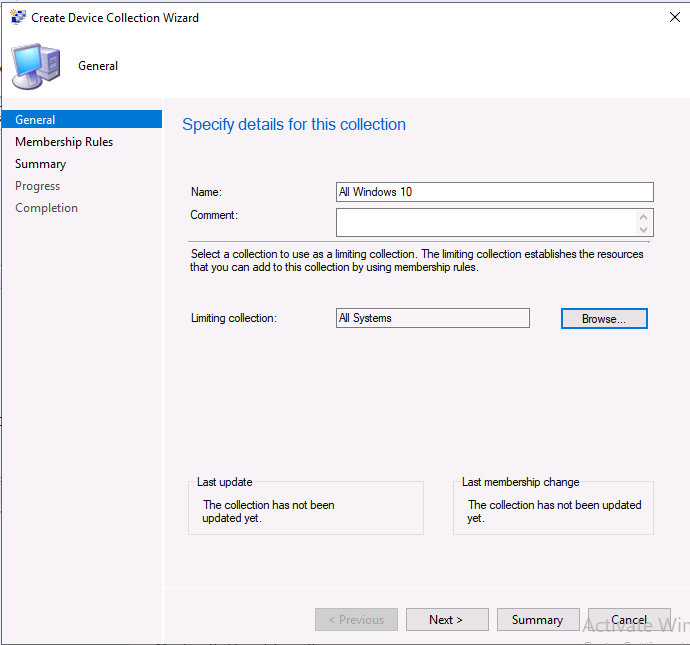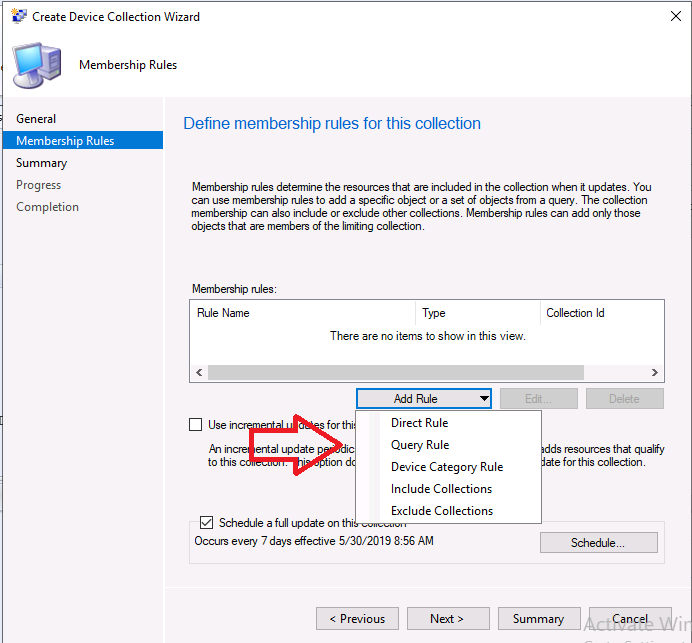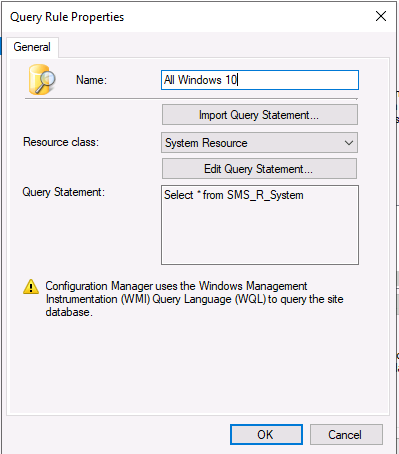Introduction
This multi-part guide will show you how to install the latest baseline version of Configuration Manager from Microsoft. The latest available baseline version is System Center Configuration Manager (Current Branch) version 1902 as of April the 10th 2019. I blogged how to upgrade to 1902 here. This guide is aimed a new installations of SCCM. Baseline media is used to install new ConfigMgr sites or to upgrade from supported versions, for more information about baseline media please see my blog post here.
This series is broken down into the following parts:-
- Part 1 – Get the lab ready, configure ADDS
- Part 2 – Join CM01 to Domain, add users, create the Systems Management container, delegate permission
- Part 3 – Role and Feature installation, installation of WDS and ADK
- Part 4 – Configure and install SQL Server 2017
- Part 5 – Configure and install SCCM 1902 Current Branch
- Part 6 – Create device collections (This part)
- Part 7 – Configuring discovery
- Part 8 – Configuring boundaries
You can use this multi-part guide to get a hierarchy up and running on Windows Server 2019 using SQL Server 2017. The concept behind this is to guide you through all the steps necessary to get a working Configuration Manager Primary site installed (for lab use) using manual methods or automated using PowerShell. This gives you the power to automate the bits that you want to automate, while allowing you to manually do other tasks when needed. You decide which path to take. PowerShell knowledge is desired and dare I say required if you are in any way serious about Configuration Manager.
I will show you how to do most steps via two methods shown below, it’s up to you to choose which method suits you best but I highly recommend automating everything that you can, using PowerShell.
- Method #1 – Do it manually
- Method #2 – Automate it with PowerShell
Downloads
The scripts used in this part of the guide are available for download here. Unzip to C:\Scripts. The scripts are placed in the corresponding folder (Part 1, Part 2 etc) and sorted into which server you should run the script on (DC01 or CM01).
Step 1. Create device collections
Note: Perform the following on the Configuration Manager server (CM01) as a Local Administrator
In this part you’ll create some device collections to prepare your lab for Servicing Windows 10, whether using WAAS (Windows As A Service) or using the Inplace Upgrade (IPU) Task Sequences built into ConfigMgr. The collections created include some based on the recently released Windows 10 version 1903.
Method #1 – Do it manually
You can create collections using the ConfigMgr console and clicking your way through the wizard, you’ll need to add membership queries to populate the collections, and include Include or Exclude rules as appropriate. To create collections manually open the Assets and Compliance node and select Device Collections.
Right click on Device Collections and choose Create Device Collection.
In the wizard that appears give the collection a name, eg: All Windows 10 and limit it to another existing collection by clicking on Browse and selecting an existing collection to limit to for example All Systems. A limiting collection decides what collection members of this collection must be in first in order to appear within this collection.
Next you decide how you want the collection to populate with members, the most common method of populating a collection is to use a query, so click on the Add Rule drop down box and selct Query Rule.
Doing so brings up the Query Rule properties screen, give the query a suitable name such as All Windows 10.
Next click on Edit Query Statement and then select Show Query Language
Note: In a production environment be very careful about editing query statements on ‘live’ collections that have Task Sequences, Packages or Applications deployed to them, otherwise you can have unintended results by making a mistake with the query.
In the Query statement properties screen, remove the current query (which basically selects EVERYTHING in your environment) and in its place, paste in a working (known good) query, for example for All Windows 10 use the following query.
select SMS_R_SYSTEM.ResourceID,SMS_R_SYSTEM.ResourceType,SMS_R_SYSTEM.Name,SMS_R_SYSTEM.SMSUniqueIdentifier,SMS_R_SYSTEM.ResourceDomainORWorkgroup,SMS_R_SYSTEM.Client from SMS_R_System inner join SMS_G_System_OPERATING_SYSTEM on SMS_G_System_OPERATING_SYSTEM.ResourceID = SMS_R_System.ResourceId where (SMS_R_System.OperatingSystemNameandVersion = 'Microsoft Windows NT Workstation 10.0' or SMS_R_System.OperatingSystemNameandVersion = 'Microsoft Windows NT Workstation 10.0 (Tablet Edition)')
Click OK to close the Query Rule Properties screen. Next you can optionally adjust the membership schedule by clicking on Schedule.
To read the rest of this post please continue over at windows-noob.com here.


